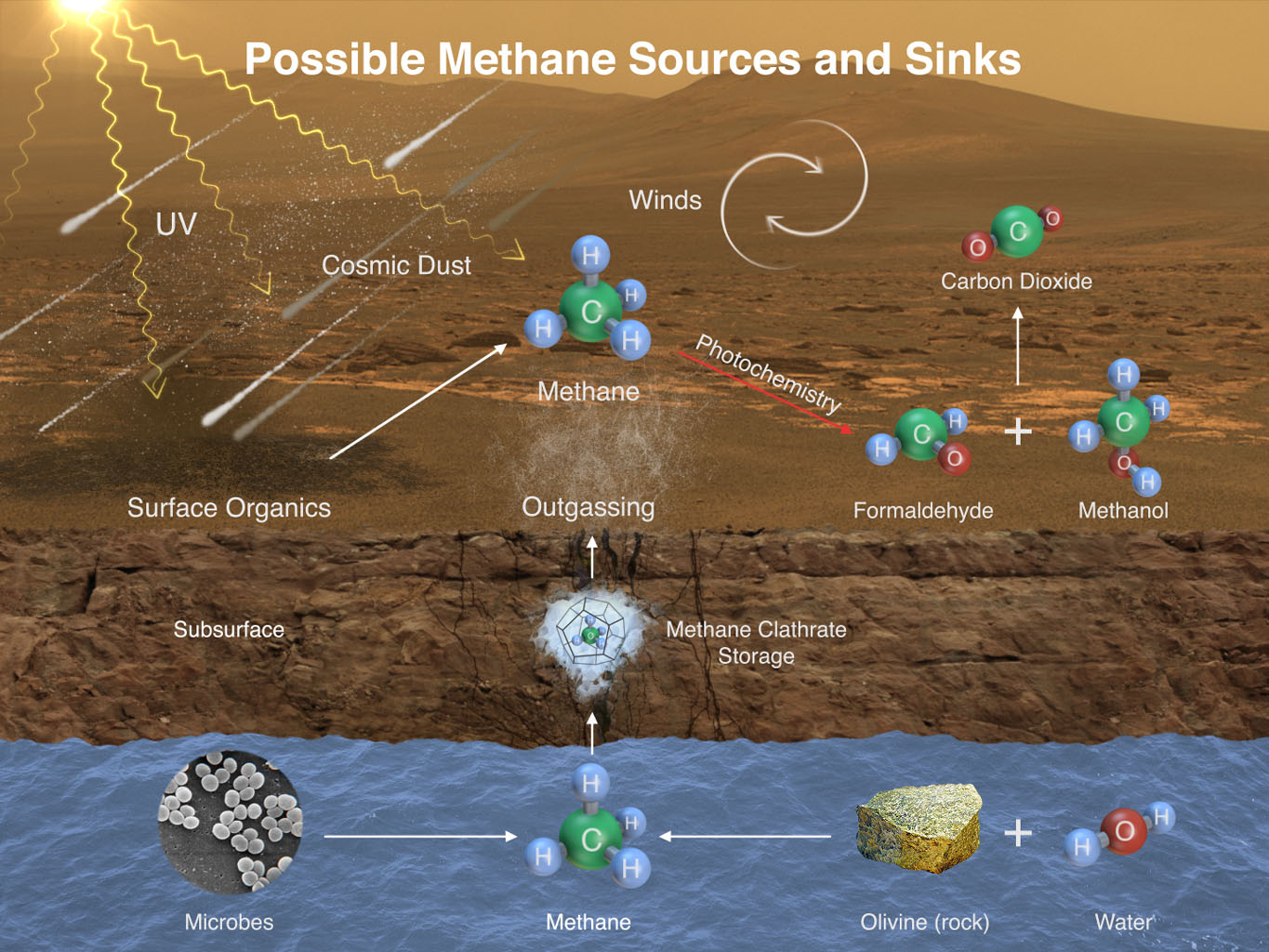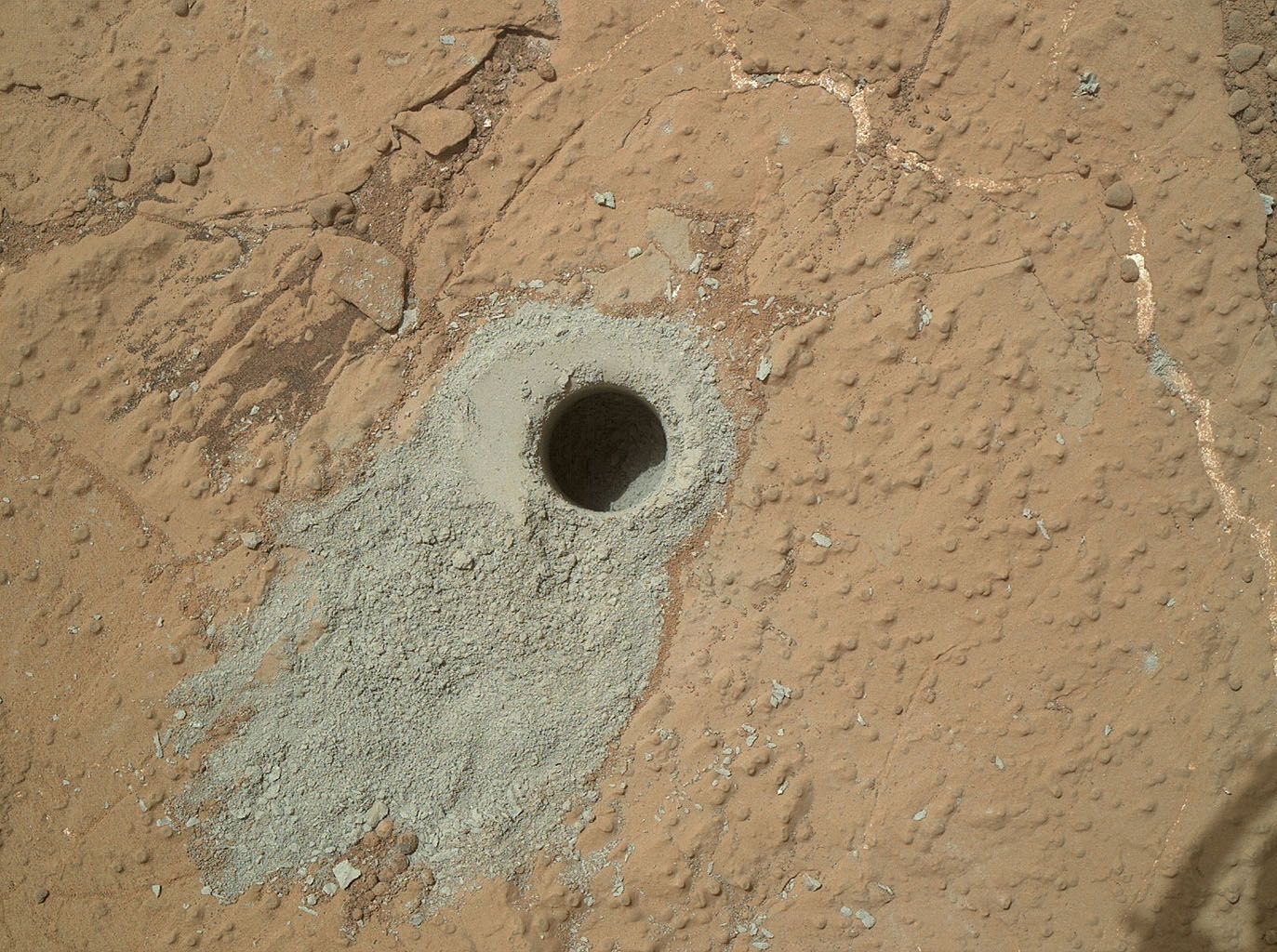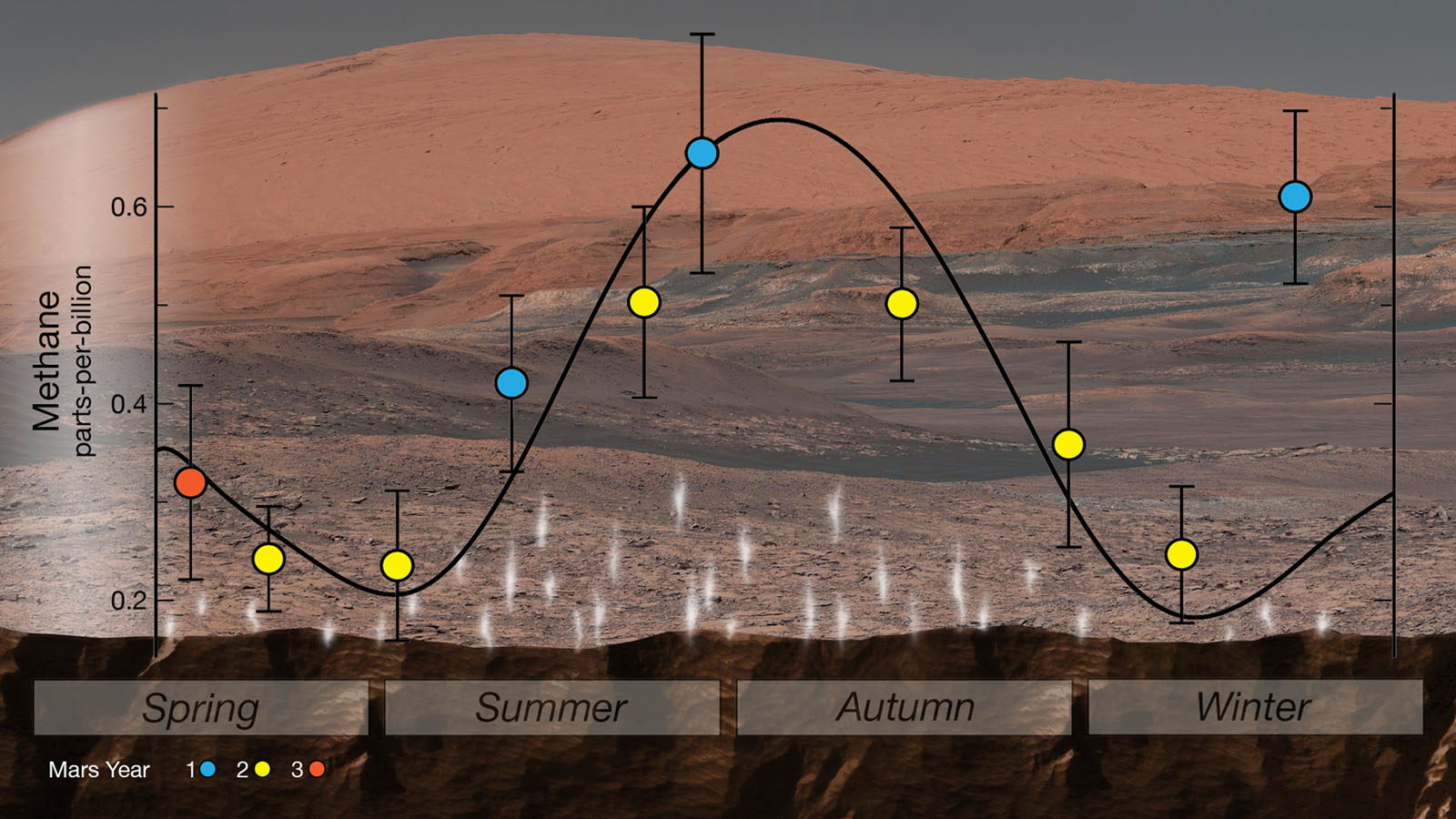NASA’s Curiosity rover has been exploring an area of Mars called Gale Crater, since landing on the red planet in 2012. It was tasked with assessing the habitability of Mars. What was Mars like in the past? Were the conditions right for life?
Let’s be clear, Curiosity was not equipped with the instruments needed to identify life forms, but it can tell us if conditions were right for life to have survived.
Throughout its time on the red planet, Curiosity has discovered a bit of an enigma: Mars has methane and the abundance changes with the seasons. Big surges of methane can indicate that some sort of biological process is taking place, but that’s not always the case. And it’s not a definitive sign of life.
Methane is a gas produced by one of two methods on Earth: biological and geological. That means that some sort of life form could be producing or perhaps there’s some sort of geological explanation.
This is puzzling to scientists back on Earth because the Martian methane has been detected by ground-based telescopes. But recent orbital data from Mars shows the minuscule amounts of methane are gone.
In fact, the Trace Gas Orbiter (TGO)—a joint European and Russian mission—which launched in 2016 and was designed to sniff-out trace gases, such as methane, says the Martian air is basically methane-free.
But, NASA’s Curiosity rover may have just taken a big step forward in understanding this conundrum.

Curiosity’s detection of methane is nothing new. The six-wheeled rover has detected surges in methane throughout its mission. The most recent occurrence, recorded in June 2019, showed staggeringly high levels of methane—21 ppb (parts per billion). That’s the highest the rover has recorded to date.
Neither TGO nor its counterpart, the Mars Express orbiter, detected any methane at all in June.
TGO has detected minute amounts of methane—around 0.012 ppb—during its first few months of science operations. That’s equivalent to roughly 30 times less than what Curiosity sees. (Mars Express did detect the first methane surge that Curiosity spotted in June 2013.)
Why is there such a discrepancy between ground measurements and orbital data? The Curiosity science team has a few ideas.

First off, there could be some sort of atmospheric process taking place that is scrubbing it out of the atmosphere. Curiosity takes measurements on the ground and detects the methane, while TGO orbits the planet and does not. This means that something happens to it as it travels upwards through the atmosphere.
Another explanation could be atmospheric expansion and contraction. Mars has an atmosphere, albeit an incredibly thin one compared to Earth’s. Every day the heat from the sun causes the atmosphere to expand and contract.
As the atmosphere expands during the day, the methane could become more diffuse. Since Curiosity measure methane at night, when the rover is less busy, it could explain why the methane appears more abundant. That means that the rover is sniffing the atmosphere when its more dense, which means the methane concentration would be greater.

The team plans to take some daytime methane measurements and compare those with orbital data. This will give the team some insights into why the data is so different. Once they have that puzzle solved, they can move onto larger questions, like what generates the methane?
It’s also entirely possible that the gas may have been generated billions of years ago in deep, underground pockets, and it’s just now seeping up through the bedrock. Only time and more measurements can tell.
NASA is sending its next-generation Mars rover to the red planet this July. Dubbed the Mars 2020 rover, the vehicle is a souped-up version of Curiosity. This rover will not only be able to look for biosignatures (or signs of life), it will also bag up samples for a future return to Earth.

(adsbygoogle = window.adsbygoogle || []).push({});
<!–
–>
var disqus_shortname = «teslarati»;
var disqus_title = «Mars rover to Earth, this red planet has a methane problem»;
var disqus_url = «https://www.teslarati.com/mars-rover-detects-methane-problem/»;
var disqus_identifier = «teslarati-128236»;

